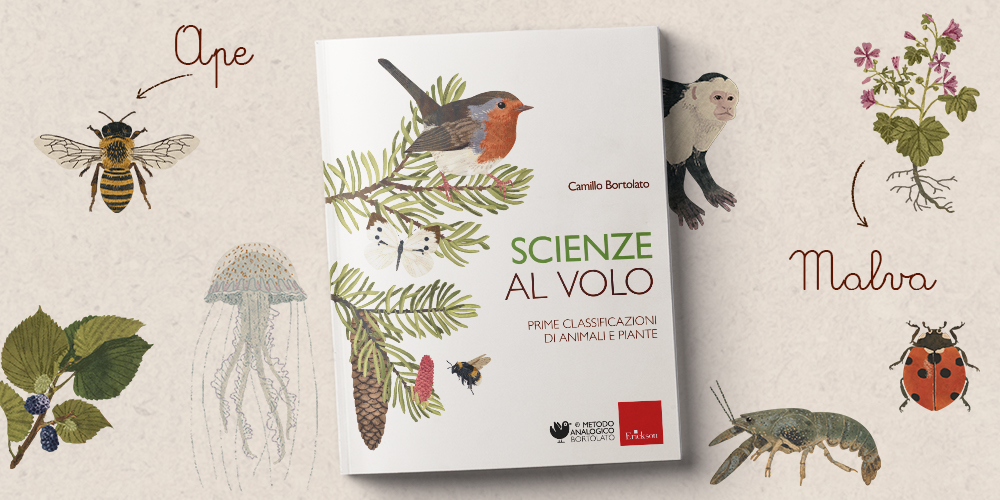 EN
EN
 PT
PT
First classifications of animals and plants
Product: Book
Trim size in cm: 17x24cm
Pages: 120
ISBN: 9788859023500
Publication date: 01/09/2020
Suitable for: Primary 1st level (ages 6-7), Primary 2nd level (ages 8-10)
REQUEST A SAMPLE OR MORE INFORMATION
Classifying is a pleasure. Babies do it continuously from birth: they untangle themselves in the multiplicity of forms and bring order, because the spot where things are placed is almost more important than the things themselves.
From Teacher Camillo, who is loved and followed by thousands of pupils and teachers in Italy, comes a new book that brings children closer to the world of science spontaneously and naturally!
The book explains the classification of the animal and plant kingdoms using a pictorial and realistic illustrative apparatus.
On each page, the names of some specimens of that category are shown, with the relative images on the right.
So here is a ladybug that belongs to the beetle family, which belongs to the insects, which in turn are part of the arthropods, which belong to the invertebrates … and so on.
The attached cards, which show the animal or plant and its classification on the back, allow children to consolidate these discoveries. Like a game, you can also study it together with your schoolmates.

First classifications of animals and plants

A tool for exploring the classification of animals and plants, reorganizing the knowledge that children already have.
Science on the fly allows you to experience managing complexity without getting lost, in a very short time, by playing with taxonomy. So here is a ladybug that belongs to the beetle family, which belongs to the insects, which in turn are part of the arthropods, which belong to the invertebrates ... and so on.
The richness of the images and the clarity of the overall picture stimulates the interest and curiosity of children. In addition, the attached cards - which show the animal or plant and its classification on the back - allow them to consolidate what has been discovered. Like in a game, you can also do it with your classmates.
HOW TO USE THE BOOK
Science on the fly is a tool to leaf through from beginning to end in the span of 30 minutes (more or less).
Leaf through some pages of the book which have been translated into English to facilitate your evaluation of the product:
THE AUTHOR
Camillo Bortolato is a teacher and pedagogist, the author of tools and materials on the Analogical Method published by Erickson Editions.